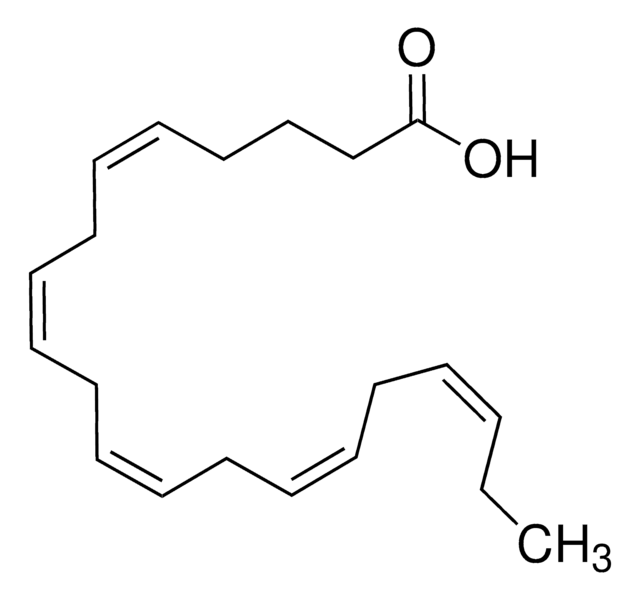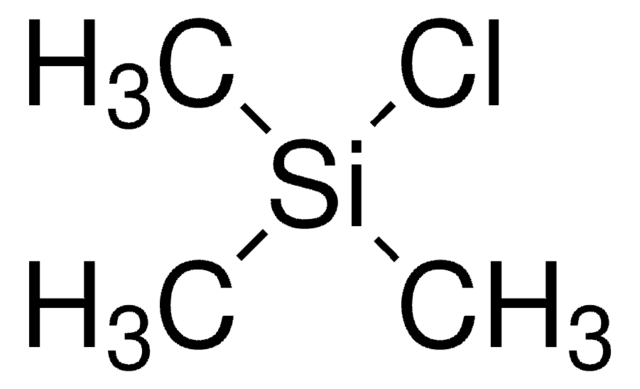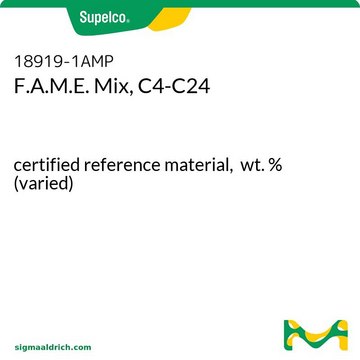53171
cis-4,7,10,13,16,19-Docosahexaenoic acid
analytical standard
Sinônimo(s):
DHA
About This Item
Produtos recomendados
grau
analytical standard
Nível de qualidade
Ensaio
≥98.0% (GC)
prazo de validade
limited shelf life, expiry date on the label
técnica(s)
HPLC: suitable
gas chromatography (GC): suitable
formato
neat
grupo funcional
carboxylic acid
temperatura de armazenamento
−20°C
cadeia de caracteres SMILES
CC/C=C\C/C=C\C/C=C\C/C=C\C/C=C\C/C=C\CCC(O)=O
InChI
1S/C22H32O2/c1-2-3-4-5-6-7-8-9-10-11-12-13-14-15-16-17-18-19-20-21-22(23)24/h3-4,6-7,9-10,12-13,15-16,18-19H,2,5,8,11,14,17,20-21H2,1H3,(H,23,24)/b4-3-,7-6-,10-9-,13-12-,16-15-,19-18-
chave InChI
MBMBGCFOFBJSGT-KUBAVDMBSA-N
Procurando produtos similares? Visita Guia de comparação de produtos
Aplicação
Código de classe de armazenamento
10 - Combustible liquids
Classe de risco de água (WGK)
WGK 3
Ponto de fulgor (°F)
143.6 °F - closed cup
Ponto de fulgor (°C)
62 °C - closed cup
Escolha uma das versões mais recentes:
Já possui este produto?
Encontre a documentação dos produtos que você adquiriu recentemente na biblioteca de documentos.
Os clientes também visualizaram
Nossa equipe de cientistas tem experiência em todas as áreas de pesquisa, incluindo Life Sciences, ciência de materiais, síntese química, cromatografia, química analítica e muitas outras.
Entre em contato com a assistência técnica









